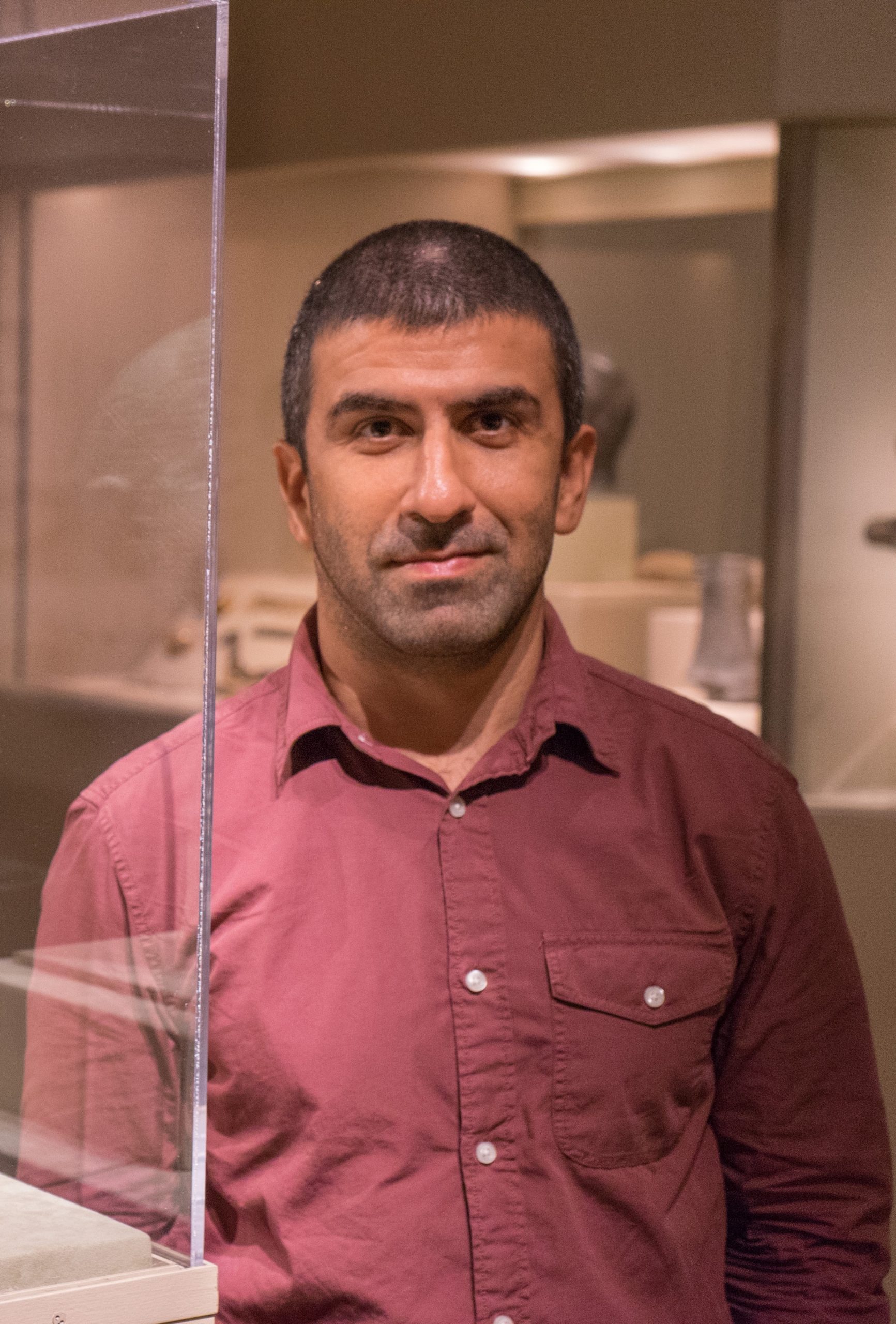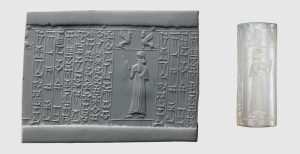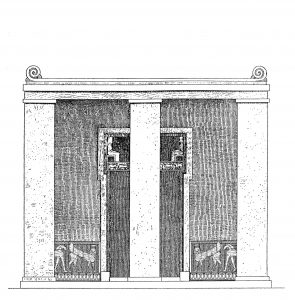
Macalester College’da sanat tarihi yardımcı doçenti olan Dr. Yalçın, Antik Yakın Doğu ile Akdeniz sanatı ve arkeolojisi konularında uzman olarak Mezopotamya, Suriye ve Anadolu’nun Tunç ve Demir Çağı kültürlerine odaklanmaktadır. Araştırma alanları arasında sanat ve kimlik, toplumsal cinsiyet ve temsil, Antikçağ dünyasındaki sanatsal bağlantılar ve Batı’daki eski eser merakı ile Avrupa ve Amerika’daki eski eser koleksiyonlarının oluşumu yer alıyor. Dr. Yalçın, ANAMED bursiyeri olarak yapacağı çalışmada, Erken Yunan tapınakları ve mimari heykelleri üzerindeki Geç Hitit etkisi ve Anadolu’nun Demir Çağı krallıklarının bu etkileşimde oynadığı rol konusundaki araştırmalarını genişletmeye devam edecektir. Dr. Yalçın, Macalester’dan önce, New York’taki Columbia Üniversitesi ve Parsons School of Design’da Antikçağ ve Batı sanat tarihi ile müze çalışmaları üzerine lisans ve yüksek lisans düzeyinde dersler vermiştir. Metropolitan Sanat Müzesi, Pierpont Morgan Kütüphanesi ve Kahire’deki Hollanda-Flaman Enstitüsü’nden burslar ve ödüller almıştır. Dr. Yalçın, öğretim ve araştırma çalışmalarının yanı sıra Columbia Üniversitesi Mezopotamya Anıtlarını Haritalandırma Projesi ile Boğaziçi Üniversitesi Tarsus-Gözlükule Kazı Projesi’nin de üyesidir.
Research Title: From Syria to Crete and Beyond: Exploring the Neo-Hittite Impact on the Orientalizing and Archaic Period Temples in Greece
Dr. Yalçın is an Assistant Professor of Art History at Macalester College, specializing in the art and archeology of the ancient Near East and Mediterranean with a focus on the Bronze and Iron Age cultures of Mesopotamia, Syria, and Anatolia. His research interests include art and identity, gender and representation, artistic interconnections in the ancient world, and western antiquarianism and the formation of European and American antiquities collections. As a fellow at ANAMED, Dr. Yalçın is continuing to expand his research on the Neo Hittite impact on early Greek temples and their architectural sculpture, and the role of the Iron Age kingdoms of Anatolia in this interaction. Prior to Macalester, Dr. Yalçın taught undergraduate and graduate–level courses in ancient and western art history, and museum studies at Columbia University and Parsons School of Design in New York. He has been awarded fellowships and awards from the Metropolitan Museum of Art, Pierpont Morgan Library, and the Netherlands-Flemish Institute in Cairo. In addition to his teaching and research, Dr. Yalçın is also a member of the Mapping Mesopotamian Monuments Project of Columbia University, and the Tarsus-Gözlükule Excavation Project of Boğaziçi University.
Fellow’s End of the Academic Year Research Report:
From Near Eastern Seals to Ancient Greek Temples
As a senior fellow at ANAMED during the 2021–2022 academic year, I have worked on two different projects. The first one is a book project entitled “Selves Engraved on Stone: Seals and Identity in the Ancient Near East, ca. 1415–1050 BCE.” This book is a heavily revised and expanded version of my dissertation, which was submitted to Columbia University in 2014. It explores how multiple social identities (religion, gender, family, community, professional and institutional affiliations, etc.) were constructed and displayed through the material, visual, and textual characteristics, as well as use, of personal seals from ancient Babylonia, Assyria, and Syria in the latter half of the second millennium BCE. While the vast majority of these seals were in cylinder form (Fig. 1), a few were of stamp and signet types. In this quest, I analyzed hundreds of seals and seal impressions from Mesopotamia and Syria in light of a theoretical framework that is based on scholarly literature produced in the fields of social psychology, sociology, anthropology, philosophy, and art history. At ANAMED, I finished the introduction, wrote the conclusion, and put the final touches on Selves Engraved on Stone before submitting it for peer review in early November 2021. I am currently preparing the revised final version of the manuscript, applying the revisions suggested by reviewers.

Fig. 1. Seal of Tunamisah, made of chalcedony, ca. fourteenth century BCE, Metropolitan Museum of Art, New York (74.51.4301) (art object in public domain).
In my post-dissertation project, which developed in the last five years, my focus shifted from small-scale objects and the issue of identity to architecture and the intercultural connections in the ancient Mediterranean. In this respect, “From Syria to Crete and Beyond: Exploring the Neo-Hittite Impact on the Orientalizing and Archaic Temples in Greece,” is quite different from the first project mentioned above in terms of its geographical and chronological scope, as well as the type of material it investigates. My main goal as an ANAMED fellow has been to expand my study on the Neo-Hittite impact on the early Greek temples and their architectural sculpture, as well as the role of the Iron Age kingdoms of Anatolia, specifically Phrygia and Lydia, in this interaction.
A significant trend that I observed in the scholarship has led me to this topic. The scholarly studies that investigate the visual culture of the Aegean world during the Orientalizing period (ca. 750–600 BCE) generally put their emphasis on the arts employed in small portable objects and provide invaluable insights into the artistic exchanges between the Aegean and the Near East during the Iron Age (ca. 1200–600 BCE). Thanks to this rich literature, the Near Eastern and Egyptian impact on small-scale arts in Greece, including sculpture and metalwork, is by now a widely accepted phenomenon. Architecture, however, has remained uncharted territory in this discussion. The course of Greek temple architecture—along with its design and ornamental elements from the Orientalizing period to the Archaic Era (ca. 600–480 BCE)—is still portrayed in scholarly literature as a predominantly indigenous development subject to minimal input, especially from the Near East. An investigation of Neo-Hittite monumental architecture of the Iron Age, on the other hand, reveals fundamental features of early cult places in the Aegean, including the preference for ante-style design and sculptural orthostat ornaments, which had close connections with their counterparts in southern Anatolia and northern Syria. My recently published article addresses these similarities through a close analysis of so-called Temple A in Prinias on Crete and the ‘Ain Dārā temple in northern Syria (Fig. 2).

Fig. 2. Facade of Temple A in Prinias, Crete, ca. 630–620 BCE (image adapted from Pernier 1934, pl. XIX B).
In my current studies at ANAMED, I intend to build on this work and draw scholarly attention to this topic, particularly to how the knowledge of Neo-Hittite architectural environments was transferred to the Aegean. For this purpose, I have been reading extensively on the history and archaeology of Phrygia, Lydia, the Neo-Hittite kingdoms, and the Orientalizing and Archaic period temples in the Greek world. Additionally, I visited numerous archaeological sites and museums in Turkey and Greece in the last six months, which allowed me to gain new perspectives on the archaeological and art historical material and issues that I address in this project. For instance, I am intrigued by the cult-related objects and building plans excavated in Mycenaean settlements, which are currently on display at the National Archaeological Museum in Athens. While the concept of a temple (i.e. a house dedicated to a god) seems to have been a new phenomenon in Iron Age Greece, the material and architectural remains of the Mycenaean past necessitate a deeper understanding of the history and archaeology of cult places in the Aegean from the Bronze to Iron Ages. How much of the Bronze Age religious practices lasted into the Iron Age is an important question to answer if we want to improve our understanding of the formation of temples in the Aegean from the eighth century BCE onwards. Additionally, during my visit to the Heraklion Museum in Crete, I was able to see in person the sculptures that were used in the Orientalizing period temples in Prinias and Gortyn. Having seen them in person, I am convinced that some of these sculptures, just like in the Neo-Hittite orthostat tradition, were placed on the bottom courses of the external walls of those cult places. Overall, the readings and museum/site trips that I have been doing in the past six months have been immensely helpful in clarifying certain issues regarding the Near Eastern impact on the emergence of early temples in the Aegean. They have led me to new questions, as well, which I will be working on in the upcoming months and years. My ultimate goal is to turn this work into another book project which will both question the isolationist approaches to the Greek temple in scholarly literature and contextualize it within the interactive world of the ancient Mediterranean.

